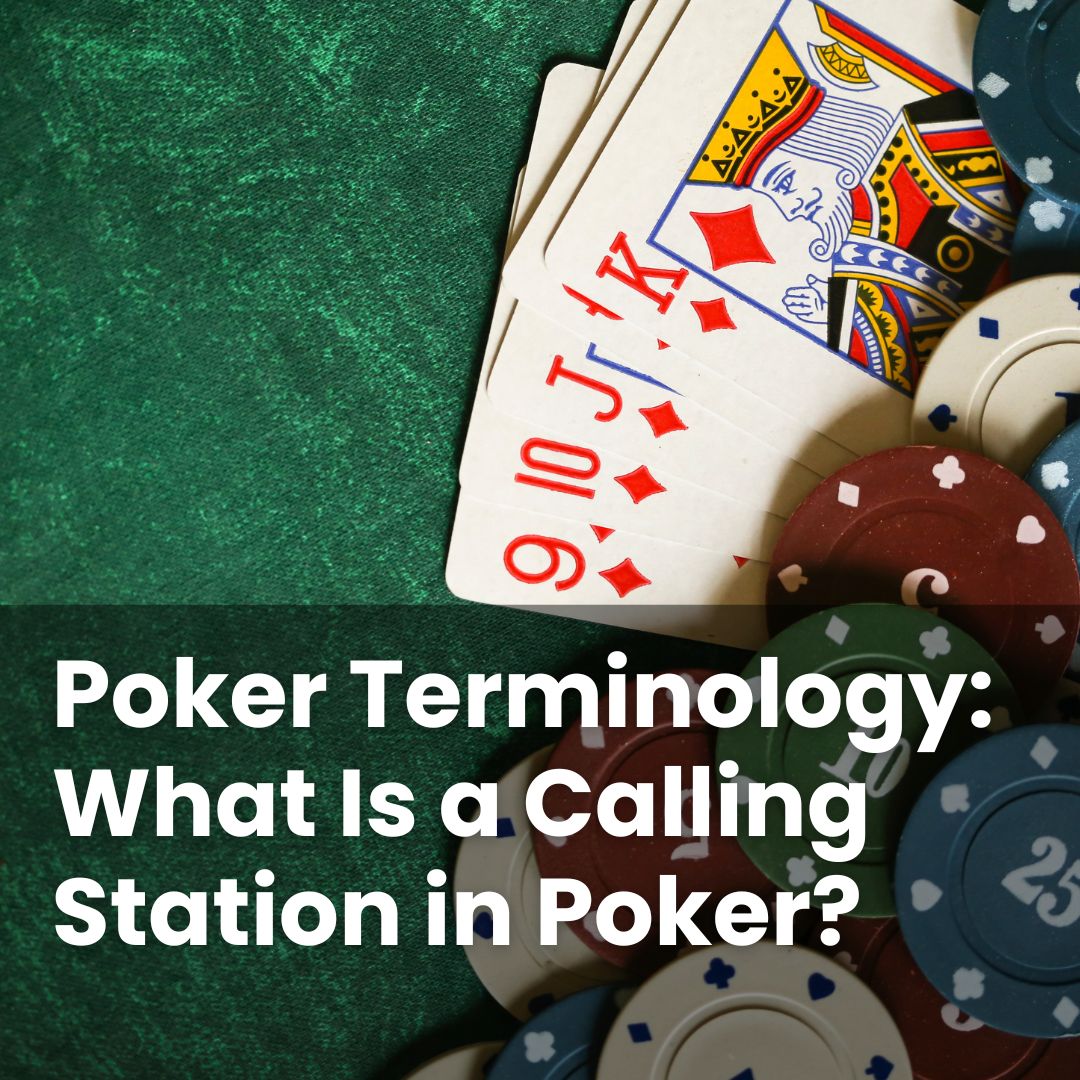Learning the language used around the poker table can seem a bit confusing at first, especially if you are new to the game or just starting out with online casinos. Knowing the meanings behind certain phrases could make it easier to follow along and understand game strategy.
One of the terms you might hear is “calling station”, which comes up often in both live and online poker games. If you are not sure what it means or why people use it, you are not alone.
Understanding the names for different playing styles, like this one, could help build confidence and make poker more enjoyable, whether you play in person or on a licensed UK site. Keep reading to find out exactly what a calling station is in poker, and how this term is used at the table.
What Does Calling Station Mean in Poker?
A calling station is a nickname used in poker to describe someone who often calls other players’ bets rather than choosing to fold or raise. This approach is less about taking control of the action and more about matching the amount placed in the pot, even with a hand that is only average or unproven.
In many cases, a calling station does not fold easily, so they keep adding chips to the pot across several betting rounds. Because they tend to stay in, other players cannot rely on tactics that depend on opponents folding. That is why the term matters, it signals a style that changes how hands are contested and how value is won or lost.
While it sounds a bit technical, it simply points to a common way some people approach betting rounds. Once you recognise it, the flow of a hand might make more sense and you can adjust your expectations about how the pot might build.
If you do decide to try your hand at poker, remember to do so responsibly and within your means; never wager more than you can afford to lose.
Key Traits of a Poker Calling Station
A poker calling station is someone who calls frequently and raises rarely. They are often reluctant to fold, preferring to continue by matching bets rather than making bold moves.
You might see them enter many pots before the flop, then keep calling on the flop and turn with pairs, draws or hands that are not clearly strong. They usually avoid pushing opponents off pots with raises and are happy to see a showdown, even when their holding is fairly thin.
Another tell is how they react to pressure. Instead of tightening up when bets grow, they continue to call at a similar pace. Over time, this shows up as a pattern of high participation with low aggression. For example, in a six-handed game, the player who calls pre-flop most hands and then check-calls on later streets without many raises will stand out.
These tendencies do not make every decision predictable, but they do shape the types of pots they create, usually multi-way, slower and heavier on showdowns.
Discover The Best Online Casinos
Browse our list of top-recommended casino sites, read reviews from real players & be the first to get access to the latest casino bonuses
Why Do Players Struggle Against a Calling Station?
Many strategies rely on opponents folding weaker hands. Against a calling station, those folds come less often, so bluffs lose their impact and speculative bets get paid off more than intended. A triple-barrel bluff that works well against tighter players is far riskier when someone is willing to keep calling from start to finish.
It can also be harder to estimate what a calling station is holding. Because they continue with so many hands, their range is wide and uneven. Usual clues, like a quick call meaning weakness or a long pause meaning strength, become less reliable when calling is their default response.
The net effect is a game that feels stickier. Pots go to showdown more frequently, marginal hands get revealed more often, and mistakes with bet sizing are magnified. Understanding this helps explain why frustration builds quickly against this style, especially if value bets are missed or bluffs are overused.
How to Spot a Calling Station at the Table
Spotting a calling station becomes straightforward once you know what to look for. The clearest sign is consistent calling across several hands. They enter a lot of pots, call pre-flop with a wide range, and then keep calling on the flop and turn with hands like bottom pair, weak top pairs or drawing hands. Raises are rare, even with medium-strength holdings.
Showdowns offer strong evidence. If someone frequently reaches the river and tables marginal hands, yet followed a call-call-call pattern to get there, you are likely seeing a calling station at work. Chip movement can hint at the same thing, their stack ebbs away through many small and medium calls rather than a few decisive pots.
Online, basic tools such as hand histories make these patterns easier to confirm. You will often notice a player who gets involved often but raises very little, which mirrors the behaviour you would see in person. Tendencies can shift over time, though, so keep an eye on whether a player tightens up or becomes more aggressive as the table changes.
When Can a Calling Station Be an Advantage?
Although the label sounds negative, there are spots where a more passive approach can serve a purpose. Against very aggressive opponents who bet frequently, calling with solid made hands can be an effective way to let them continue placing chips into the pot. For instance, holding top pair with a good kicker, some players prefer to call on early streets to keep bluffs and weaker value hands in, then make a clear decision on later streets.
There are also situations where calling keeps the pot controlled with medium-strength hands. If raising would build the pot against stronger ranges, calling can limit risk while still allowing you to see the next card. This is especially relevant when drawing at a fair price or when other players are likely to make mistakes by betting too often.
Multi-way pots provide another example. If several players are interested, a raise may push out the very hands you are ahead of. Calling can keep weaker holdings in and create opportunities to be paid when your hand remains best.
The key is intent. Occasional, disciplined calling can fit within a broader, thoughtful strategy. It works best when the price is right, the opponent type is clear and you have a plan for later streets, rather than calling automatically and hoping the situation turns around.
Common Mistakes Players Make Against Calling Stations
It is common to lean on bluffing against the wrong opponent. Bluffing depends on folds, and calling stations do not fold easily, so chips drift away with little return. A related mistake is firing large bets with marginal hands, expecting the pressure to do the work. When the call still comes, those bets simply inflate the pot in unfavourable spots.
Another error is under-valuing strong hands. Because calling stations pay to see showdowns, failing to bet for value leaves money on the table. Medium to strong holdings often deserve straightforward, confident value bets across multiple streets, sized to be called.
Misreading patterns can cause trouble too. Some players assume a quick call means weakness, then attempt a big bluff on the next street. Against someone who calls by default, timing tells matter less than the overall tendency. It is usually better to accept that thin bluffs perform poorly and focus on clear value when ahead.





